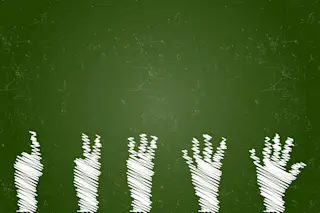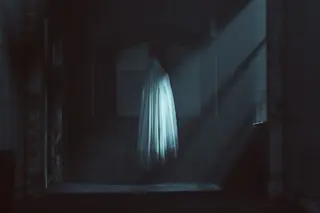A designer picture frame seems to bend reality: Everything inside it moves in slow motion, seemingly defying the laws of physics. But, as with most mysteries, there's more than meets the eye. Or, put more accurately, there's more than meets the brain.
When Fast Becomes Slow
Jeff Lieberman, a designer and engineer, created an analog version of a movie camera that creates illusory movements without a shutter. His design, called Slow Dance, relies on the interplay between a set of rapidly blinking LED lights and a vibrating object. By altering the rate at which the lights flash, his frame causes the object inside to move in different ways, from a slow-motion sway to an erratic twitch. These images are the product of an optical illusion that takes advantage of how our brains process the world.

The object is actually vibrating very quickly, but the strobe lights hidden around the edge of the frame alter the images of the object that our brains receive. They act as a kind of analog refresh rate, only allowing us to see the object at specific times. The lights flash around 80 times a second, too fast for our brains to detect, but slow enough that we can't follow the true track the object takes. Working with the information it has, our brain constructs a moving image of the object, making it appear to wave in unreal ways.
Life is a Movie
Our visual perception is limited by the number of times per second our eyes transmit a signal to our brains. This rate varies, but has a theoretical upper limit of around 1,000 frames per second and a practical rate that can vary wildly. For example, most animated movies show only about 12 different images a second, but they still manage to appear fairly smooth. By contrast, experiments have shown that we can identify images that appear for only 13 milliseconds, which works out to almost 80 fps.

The disconnect between the moving physical world and the movies our brains stitch together, called the persistence of vision, creates some pretty trippy optical illusions, like the zoopraxiscope developed in the late 1800s. It embedded still images on a spinning wheel to create the illusion of movement. The same illusion is responsible making spinning car wheels appear to move backward, or making water appear to flow upward.

Lieberman's design began as a wedding present, and turned out to be so popular that he and his team launched a Kickstarter for it. The frame lets users put any object they want inside, and an electromagnetic motor sets them moving. Knobs on the frame control the speed of the strobe lights. In tests, he used feathers, flowers and plants, each object creating its own unique set of dance moves. He encourages users to experiment and contemplate — we should relish the experience of playing with our minds.














